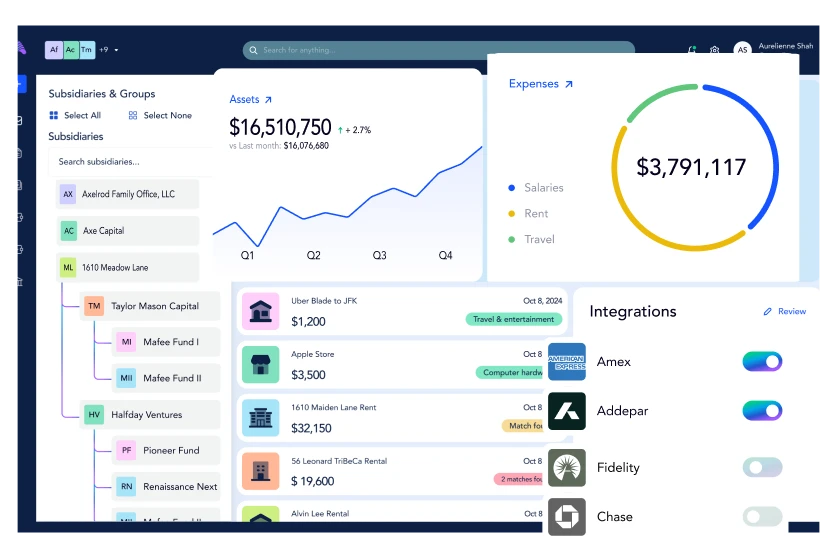What is the difference between a single and multi-family office?
A single‑family office serves one family in a focused, fully integrated way, while a multi‑family office extends its structure and resources across several families. Each model brings different strengths and trade‑offs in terms of control, cost, and scale.
Core Distinction
A single‑family office exists solely to manage one family’s wealth, governance, and administrative needs. The strategies, governance model, and investment choices align precisely with that family’s interests.
A multi‑family office pools clients from multiple families under a shared framework. This pooling enables economies of scale, broader access to resources, and shared infrastructure.
Fractional Family Office vs. Multi‑Family Office
A fractional family office offers a subset of the services that a full family office would provide, and it allocates these services to multiple families. It gives families partial exposure to office capabilities without building full internal infrastructure. While it shares clients like a multi‑family office, its emphasis lies in modular access to core functions.
Advantages of Multi‑Family Offices Compared to Standard Wealth Managers
- They bring specialist talent across tax, estate, investment, and governance functions rather than relying on a generalist.
- They expose clients to best practices used by similarly situated families, fostering cross‑client insight.
- They enable aggregation of assets (especially private investments), improving leverage, access, and cost structures.
Service Scope in Multi‑Family Offices
Typical multi-family office offerings include:
- Investment advisory and access to private markets
- Accounting and consolidated reporting
- Financial planning and insurance structuring
- Family governance and education
- Tax strategy and regulatory compliance
- Estate planning and charitable strategy
- Concierge and lifestyle services
Teams often combine investment managers, legal and tax advisors, governance professionals, and operations specialists.
When a Multi‑Family Office Makes Sense
- When a family seeks greater breadth and depth of services than a typical wealth manager can offer
- When cost sharing across multiple clients enables access to specialist capabilities
- When pooling investments creates entry to institutional‑grade opportunities that single clients would struggle to access
Families with at least $25 million in net worth often qualify for meaningful participation in an MFO, compared to the much higher threshold for a standalone SFO.
Fee Structures in Multi‑Family Offices
Fees vary according to service level and customization:
- Asset‑based fees: a percentage of assets under management (typically 0.5% to 2%)
- Performance fees: a share of investment gains
- Hourly or project fees: for specialized legal, tax, or estate work
- Retainers: fixed ongoing support
- Setup fees: onboarding and initial structuring
- Transaction or administrative fees: execution, custody, reporting
Transparency and alignment of fees with client outcomes matter greatly.
Advantages & Limitations
Multi‑family office benefits
- Lower cost per family due to shared infrastructure
- Richer service breadth and varied expertise
- Cross‑family learning and innovation
Drawbacks
- No exclusive dedication to any single family
- Potential conflicts of interest or visibility across client families
Single‑family office benefits
- Total alignment with one family’s vision
- Absolute confidentiality and control
Drawbacks
- High fixed costs
- Risk of insularity due to limited external exposure
Getting Started with a Multi‑Family Office
- Identify MFOs whose philosophy aligns with your family’s values and goals.
- Ensure fiduciary standards and transparency in service.
- Confirm depth across investment, legal, tax, governance, and operations capabilities.
- Negotiate fee terms and service levels up front.
A well‑chosen MFO offers many of the benefits of a full family office while retaining scale advantages.


.svg)





.png)


.png)

%20(1).png)